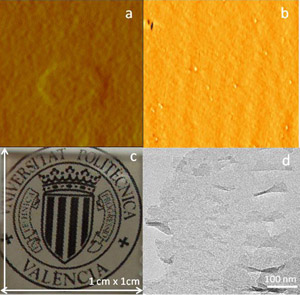Lee Hsun Lecture Series
Topic: Graphenes as metal-free or metal containing (photo) Catalysts.
Speaker: Prof. Hermenegildo Garcia
Instituto de Tecnología Química CSIC-UPV, Universidad Politécnica de Valencia, 460922 Valencia, Spain
Time: 10:00-11:30, (Mon.) Jun.20 , 2016
Venue: Room 468, Lee Hsun Building, IMR CAS
Welcome to attend!
Abstract:
Graphene as one carbon atom thick layer of sp2 carbons in hexagonal arrangement is almost transparent in the spectral UV-visible range and is a zero-band gap semiconductor with high electron mobility. However, in contrast to ideal, defectless, single layer graphene, the presence of defects or doping in graphene as well as stacking as few or multilayer assemblies changes completely the properties of these materials, creates in the layer sites that can exhibit catalytic activity for oxidation and reduction reactions at the same time that converts it into semiconductor exhibiting photocatalytic properties. The catalytic activity of carbon nanotubes and other carbon nanoforms was already known in the literature and graphenes adds new opportunities to the area of carbocatalysis. In the field of photocatalysis, initial reports described the use of graphenes as additives of photoactive semiconductors to enhance their photocatalytic activity, but more recent studies show that defective graphenes as well as graphene oxide have intrinsic photocatalytic activity.
In this presentation, a new procedure for defective graphene films preparation with semiconducting properties for overall water splitting in the absence of sacrificial electron donor or for CO2 reduction will be shown. The process is summarized in Scheme 1, while Figure 1 shows photographs and images by microscopy of the resulting films. Photocatalytic activity can be achieved by doping the graphene layer with heteroatoms and by deposition of metal nanoparticles.

Scheme 1. Procedure for the preparation of N-doped graphenes by pyrolysis under inert atmosphere of natural biopolymers.

Figure 1. Optical profilometry (a) and AFM image (b) of films of natural biopolymer before pyrolysis and photograph (c) and transmission electron microscopy image of the resulting graphene films
In addition, it will be shown that modification of this procedure can serve to obtain oriented metal nanoparticles strongly grafted on few layers defective graphene that have remarkable catalytic activity for homo and cross C-C coupling and oxidative C-Si coupling that is many orders of magnitude higher than similar graphene materials in which metal nanoparticles are simply adsorbed. It will be also commented the photocatalytic activity of these graphene supported metal nanoparticles for overall water splitting and CO2 reduction.